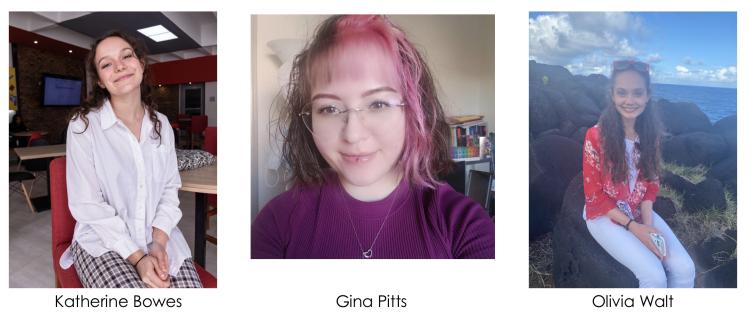Author: Katherine Bowes, Gina Pitts, and Olivia Walt
Advisor: Prof. Raichle Farrelly
Class: LING 4620: Teaching L2 Oral Skills
Semester: Fall 2022
LURA
Neurodiversity is an umbrella term referencing neurological conditions that naturally lead to differences in thinking and behavior. These include conditions such as autism, dyslexia, ADHD, and many more. It is estimated that millions of students in the K-12 system are neurodiverse; the number of children with ADHD alone reaches approximately six million (Centers for Disease Control and Prevention, 2022). However, it is rare that students are directly informed about the ways in which they and their classmates differ. This absence of knowledge leaves misinformation and stigma to run rampant through the student body, negatively impacting many neurodiverse students who may already be struggling to adhere to traditional classroom norms and expectations.
To address this social justice issue, we spent the fall 2022 semester creating an English Language Teaching (ELT) curriculum which, through the medium of English oral skill development, focuses on informing students about neurodiversity. We hope that this curriculum will help raise awareness and promote unity in classrooms for the lived experiences of neurodiverse students.
Designed primarily for English language learners at an advanced level, our curriculum is divided into three units, each which focuses on a specific oral skill (listening, speaking, and pronunciation).
Unit 1: “What is Neurodiversity?” – Listening Focus
Our first unit's aim is to introduce students to the concept of neurodiversity via listening exercises. To contextualize the primary listening task, students would engage in a brief class discussion that requires them to reflect on what they already know and what they want to know about neurodiversity. Following this, they would watch a brief introductory video about the topic. The students would watch it several times, each time focusing on a slightly different listening task (e.g., listening for gist and nuance, then filling-in-the-blanks of a partial transcript of the video). In addition to emphasizing how to effectively listen depending on the context, this lesson would also provide an informative introduction/continuation of students’ awareness of neurodiversity. Furthermore, the lesson would provide students with some basic vocabulary that would be useful for the next lesson, which focuses on speaking.
Unit 2: “Neurodiverse Conditions and Stigmas” – Speaking Focus
The objective of our second unit is to further students’ existing understanding and debunk the myths associated with neurodiversity. In the lesson, students would better familiarize themselves with specific neurodiverse conditions through videos, worksheets, and Socratic discussions. More specifically, students would work on activities that improve critical thinking in order to make connections to the school setting and understand the consequences of stigmatization towards neurally diverse people beyond the classroom. We would present a Mythbusters clip with an accompanying worksheet to help students conceptualize the idea of “myths” and formalize related dialogues in the classroom. Students would then learn how to explain myths connected to stigma, identify and debunk those stigmas, and orally justify their reasoning. Our hope is that by the end of this lesson, students would begin to understand how to be allies to the people around them and promote empathy and compassion.
Unit 3: “Raising Awareness” – Pronunciation Focus
Our final lesson encourages students to summarize their knowledge and fully employ the skills they have honed during the previous units. In the form of a public service announcement (PSA) video, students would present about one or two specific conditions that fall under the neurodiversity umbrella. The students would begin the lesson by reviewing videos of professional PSAs, focusing on how speakers “chunk” their thoughts to make their speech flow smoothly. They would then create a PSA with the intention of sharing the specific information they have learned with their peers. Learning about a topic in order to teach it to others is an incredibly effective way to consolidate knowledge and deepen understanding. In addition, we believe that PSAs are an impactful medium for spreading vital information and emphasizing the importance of clear communication, not only for the student presenting, but also for the students listening.
Overall, this series of units offers a thorough demonstration of how English language learning can be used to communicate issues of great social importance, such as (but not limited to) neurodiversity.
For our full lesson plans and additional materials, feel free to visit our webpage! https://sites.google.com/colorado.edu/teaching-l2-oral-skills/thematic-units/destigmatizing-neurodivergence?authuser=0
Image Credit
MissLunaRose12, CC BY-SA 4.0 , via Wikimedia Commons
References
-
Centers for Disease Control and Prevention. (2022, August 9). Data and statistics about ADHD. Centers for Disease Control and Prevention. Retrieved March 15, 2023, from https://www.cdc.gov/ncbddd/adhd/data.htm

